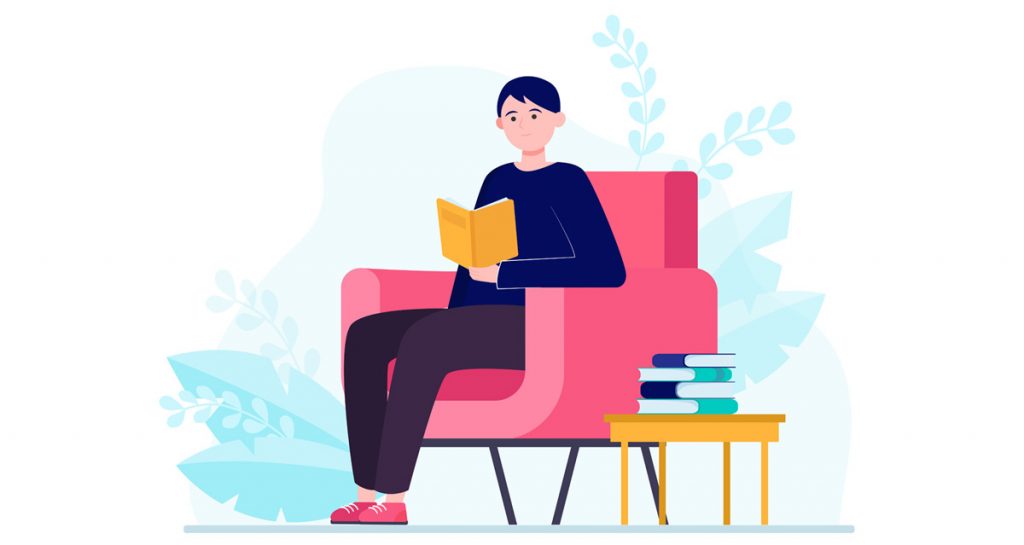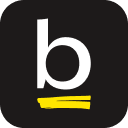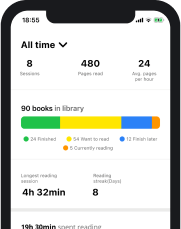Becoming a truly proficient reader is no easy task. In order for us to achieve our maximum potential as readers, we need to learn about reading strategies, implement them correctly into our reading habits, and find different ways for us to extract the most value from every book we read.
The previewing reading strategy is perhaps one of the most overlooked and valuable reading techniques. What is previewing in reading, and why is it important? How can you benefit from learning to correctly and efficiently use previewing as a strategy?
- What is previewing in reading?
- Why is previewing a useful reading strategy?
- How and when to use previewing?
- What are the steps in previewing?
- How is previewing related to comprehension?
- What is the best method for previewing text?
- What are some previewing reading strategy examples?
- What is the difference between skimming and previewing?
- How to improve previewing with Basmo?
- Final thoughts
Here at Basmo, our mission is to help you become the best reader you can possibly be. Implementing different reading strategies and techniques into your reading habits is completely going to change your level of comprehension and retention, so here’s everything you should know about previewing in reading.
Understanding the previewing meaning in reading starts as simple as learning its definition.
What is previewing in reading?
By its definition, previewing is a reading strategy that involves recalling previously acquired information and setting a clear purpose for reading. Previewing also means skimming a book or reading material to acquire certain key details about it before actually moving on to reading it in its entirety.
Previewing a text as a reading strategy has the goal of providing you with a quick overview, a rough idea of what you should expect from the book or text at hand, and a foundation for the upcoming learning curve. By previewing a text as a reading strategy, you familiarize yourself with the content, roughly analyzing what you already know about the subject.
Why is previewing a useful reading strategy?
While the definition of previewing in reading did shed some light on how this strategy works and what it is good for, let’s dive a little deeper and see how much value it can actually bring to the table.
The effects of previewing in reading comprehension have been studied in the past, and researchers have found that going through a previewing stage before reading a text can actually improve comprehension. By familiarizing yourself with the content before actually reading it actively or analytically, you set a clear purpose for your reading session and, moreover, you set some clear expectations.
The reader’s strategies for previewing and its benefits depend on the genre:
- When reading nonfiction, readers preview the work to ascertain their prior knowledge and research interests. Additionally, it enables them to comprehend how a writer has set up the data.
- Biographies are previewed by readers to learn more about the subject, the era, and potential locations and events in the subject’s life.
- When reading fiction, readers preview the characters, the environment, and the plot. Additionally, they preview to foresee the outcome of the plot.
The most basic explanation for how previewing helps with comprehension is that it creates a framework for understanding the information that is going to be examined in the upcoming reading session.
On top of the positive effects of previewing in active reading sessions in terms of comprehension, another reason why using this strategy is especially helpful in non-fiction reading assignments is that it can simply help you gain more interest in the topic at hand. It’s no secret that sometimes non-fiction can be a bit boring and hard to read. Previewing and understanding exactly what you can expect to achieve after doing said reading can help make things more interesting.
There are quite a lot of misconceptions about previewing as a reading strategy and quite a lot of unanswered questions. Luckily for you, we have all the answers.
How and when to use previewing?
Using this reading strategy is most beneficial when done before an active reading session. Regardless of whether you are about to read some non-fiction to learn some new skills or simply enjoy yourself with some fiction, previewing should be a part of the process. You wouldn’t commit to watching a two-hour movie without first seeing the trailer to ensure you’ll enjoy it, and you shouldn’t commit to reading a book without first previewing it.
How you do it depends on a series of factors, most important of which is the genre of the reading material.
- If the text is nonfiction, you should examine text features and illustrations (and their captions) to grasp the material at hand and to connect it to previously acquired information. That way, you are able to determine what you already know about the subject. Readers who preview books are better able to identify their knowledge gaps and research interests.
- If the book is fiction, you should look at the title, chapters, introduction, and other additional notes made by the author in order to identify what the book is about, where the action takes place, and whether it seems like a novel you would be interested in reading.
What are the steps in previewing?
There are four main steps in the previewing strategy. Whether we are previewing a whole book or just a chapter, the same steps will apply.
- Read the title. You can usually determine the subject or topic of the reading passage from the title. Start thinking about the things you are about to explore as you read the title. What is the topic of the material? “What type of knowledge will I acquire?” “What do I already know about this topic?”
- Read the first paragraph. The main theme of the book or text is frequently presented in the opening paragraph. Consider the information while you read the first paragraph. Does the first paragraph provide any further details on the reading? If the reading material is relatively short, you can probably extract this information from just a couple of sentences.
- Read the last paragraph. The author’s main conclusions are frequently summed up in the final paragraph. Reading that will give you a pretty good idea of what the author of the text considers to be most relevant. Again, if the material is brief, you simply need to read the last couple of sentences.
- Look over the passage. Quickly scan the text without putting too much effort into finding any details. Look for key words or key phrases only. Make a note of any significant terms that might provide you with relevant information on the main subject as you skim the text.
Give Your Reading Experience
An Extra Boost With Basmo
Track the books you read, monitor the time you spend reading and keep notes on your reading habits and how it makes you feel. You can set yourself targets for the time you spend reading and you can get notified whenever you’re behind on your reading time.
How is previewing related to comprehension?
As I mentioned above, using previewing in critical reading sessions has been found to improve comprehension levels.
What is the best method for previewing text?
Your ultimate goal is going to determine what the best previewing method is for you. There are several techniques you will need to master before you can actually figure out which one works best for you and which one brings the best results. The previewing strategies you should look at are:
- KWL+
- The Four P’s
- SQ3R
What are some previewing reading strategy examples?
There are three primary previewing strategies you should know about and apply in your reading sessions.
KWL+
- K stands for “what I Know”
- W stands for “what I Want to know”
- L stands for “what I Learned”
- + stands for “what I still want to know”
This technique involves creating a table with the four elements of the KWL+ acronym as columns. While previewing and after the process is done, you should write down the things you managed to obtain from the session. What did you want to know, what did you already know, what did you learn, and what do you still need to learn?
The KWL+ previewing strategy is extremely useful and helps you objectively point out exactly what your goals were and what you managed to achieve by previewing a reading material.
The four “P”s
- Purpose. Determine your goal for the previewing and reading session.
- Preview. Look at the title, illustrations, and other information that is easily available throughout the text. (first and last paragraphs, headings and subheadings, italics, bold print, first and last sentences of body paragraphs)
- Prior Knowledge. Objectively analyze what you already know about the topic in order to determine the level of depth you will need to go to while reading the book or material at hand in order to achieve your goals.
- Predict. Try to determine what the author is going to present within the book you are about to read. Does it meet your expectations? Is this the book you should be reading in order to better understand the topic or concepts you are looking to comprehend?
SQ3R
As the acronym suggests, there are five steps to go through in order to complete the SQ3R reading strategy. Without going into too much detail, the key points are:
- Survey: superficially analyze the text you are about to study
- Question: brainstorm and come up with a couple of relevant questions you are hoping to find the answers to in the book
- Read: do the actual reading
- Recite/Record: try to mentally create a structure of the information you were presented with.
- Reflect/Review: Extract the main points/ideas and try to put them in context with what you already knew about the topic.
What is the difference between skimming and previewing?
When you skim, you quickly scan a wide section of text with your eyes. Since skimming is done in the paragraph text, the actual body of the material you are reading, it is different from previewing. Without focusing on the details, skimming enables you to get some of the main points.
While previewing is generally done for an overview of the book or the material as a whole, skimming refers to a technique that allows you to go through the body of content in a quick manner, with the sole purpose of identifying a couple of key elements in the data.
How to improve previewing with Basmo?
Just like any other reading strategy or your reading habits in general, previewing can be massively improved if you use a reading tracking app like Basmo. Since the previewing reading strategy is usually a precursor to analytical or critical reading, you could benefit from some of the key features Basmo has to offer.
With Basmo, you can easily take notes. Taking notes while previewing is generally a very important step. Whether you use the KWL+ method or not, you would extract more value from the previewing stage by taking notes.
With Basmo, this can be done easily and very efficiently. Every time you start a reading session, the note-taking feature becomes instantly available and you can start typing right away. The notes can be formatted and organized however you see fit, so they will always be easy to read.
Basmo improves your reading habits in general. Having healthy reading habits can help you step up your game regardless of the reading strategy you are using and the stage you are in.
With Basmo, you can create a reading schedule to make sure you always have everything under control. The scheduling feature is highly customizable and allows you to select the exact days of the week and times of day when you want your reading sessions to take place. That way you can easily work around your busy schedule and hectic daily routines.
Final thoughts
So what is previewing in reading? The previewing reading strategy is a quick way for you to gain a superficial understanding of the book or text you are about to analyze. It provides you with a framework for the upcoming active reading session and allows you to decide whether a particular book will help you achieve your goals. Using Basmo will make previewing a lot easier and more efficient.
Image by pch.vector on Freepik







